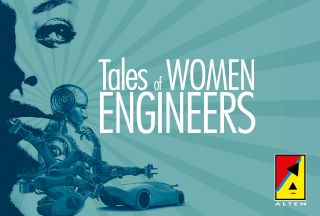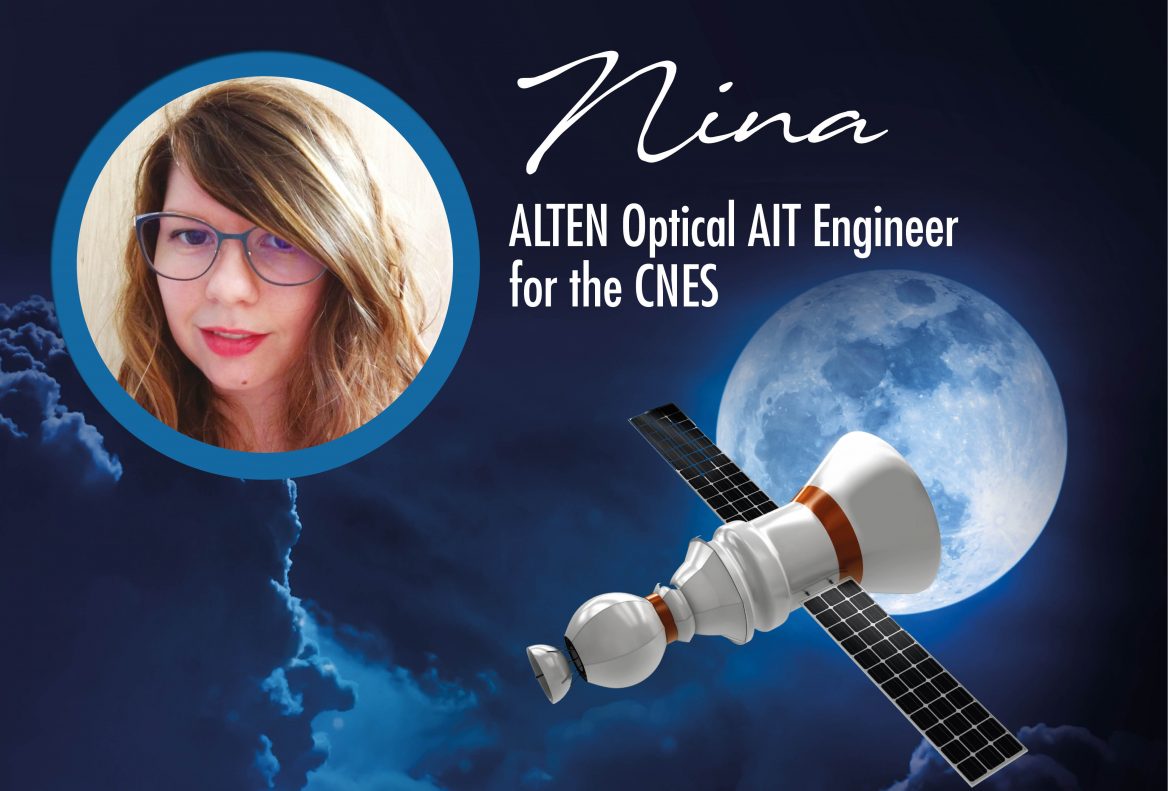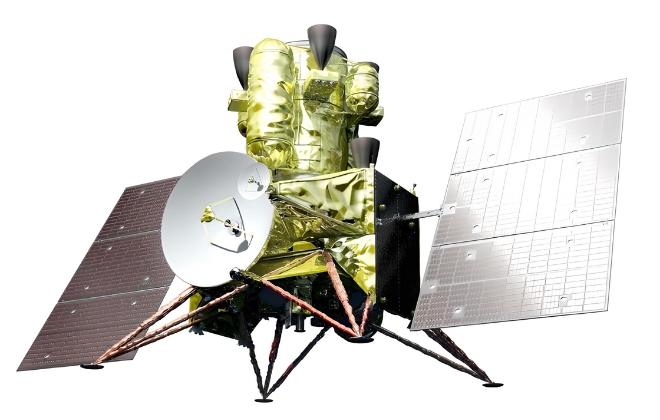Nina, ALTEN Optical AIT Engineer for the French National Centre for Space Studies (CNES)
Having obtained an undergraduate degree in Fundamental Physics and a Master’s in Science of the Universe and Space Technology, specialising in Space Technology and Instrumentation, Nina joined ALTEN to support prestigious players in the Space sector as an Optical Instrumentation Engineer and then in Optical Assembly, Integration and Testing (AIT).
“I have always been interested in astronomy and understanding the universe. When I was a child I used to love watching documentaries about how the universe works. So when I had to choose my path, I thought “why not astrophysics?”. It was therefore very natural that I went into this field!” Nina recalls.
Answering the big scientific questions through optical instrumentation
Joining a space project is often something that children dream about. “Working with the teams in this sector, which has a magical aspect to it, is really an incredible experience. It indulges my deep curiosity and is a source of satisfaction. I always feel the same pleasure when I see an instrument that we have worked on being sent into space to be used by astronauts, sometimes even on board the International Space Station (ISS)! There is nothing that could give more meaning to my work,” confirms Nina.
The space adventure is fascinating and perpetual: each project is specific. Just three years after graduating with an Engineering degree, Nina has worked on many highly technical space projects of great scientific importance. “First I joined the optical service of the CNES as an Optical Instrumentation Engineer. I have worked on a project characterising optical filters which are used in cameras that can be embedded in satellites for example.
I also worked on an active optics project on a programme that was preparing next-generation satellites for observing the Earth and for defense. When a satellite observes the Earth, the wave that returns to the image is distorted by the atmosphere. My job was to rectify the wave , meaning to make it flat, so we could get a good quality and very detailed image using a wavefront sensor”.
Nina has also trained students on a nano-satellite project with a mission of improving our knowledge of the solar system.
“My role was around the payload of the nano-satellite and I was able to help them with the optical part of the equipment. The satellite is now in space, a source of great pride for the team!”. This passionate Engineer also had the opportunity to work on validation of the thermal vacuum on the head of the Perseverance rover which is searching for signs of life on Mars…
A mini laboratory on board the ISS
The latest significant project has been integrating the new laser on the DECLIC instrument.
DECLIC is the Device for the Study of Critical Liquids and Crystallisation, a collaborative programme between the CNES and NASA. This mini-laboratory, installed on board the ISS since 2009, is for studying the behaviour of transparent media in micro-gravity conditions.
As an Optical AIT Engineer in the CADMOS department (Support Centre for Development of Micro-gravity Activities and Space Operations) of the CNES, Nina helps to draft the procedure for integrating the new laser and supervises testing of its alignment. “DECLIC activity should start again soon on board the ISS. I hope it will have a long life on board the International Space Station and that it will lead to even more interesting experiences! This is why, in three years, I haven’t really had time to be bored!” Nina explains.
Creativity, patience and curiosity are key
All the projects that Nina has worked on require a reactiveness which pushes her to always be more creative in how she responds to the challenges, which are different every day. For Nina, being an Optical Instrumentation Engineer also requires great precision, a daily challenge that means a combination of thoroughness and patience.
“I have had to set an active optical bench before that needed to be so precise that it was down to the nearest hundred nanometres!”
This profession delights fans of the big scientific questions and experimentation… And unites them! “I am fortunate to meet people every day who are passionate about the same subjects that excite me so much. This gives even more meaning to the work that I have chosen to do,” reflects Nina. She certainly seems to have found her path in life.

Discover the Tales of Women Engineers Portfolio
Discover the dedicated page about Satellites’ Assembly, integration and Test (AIT)












